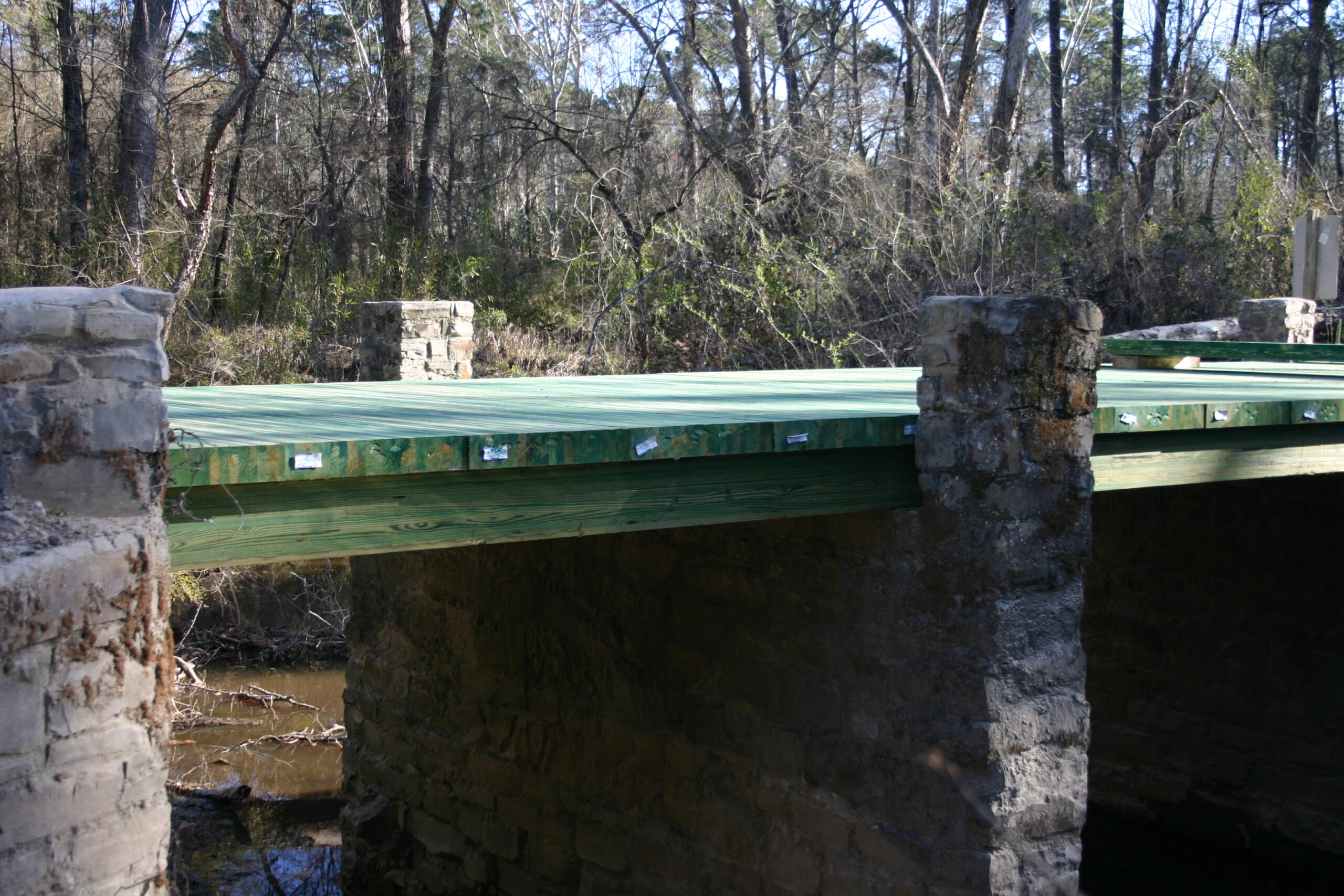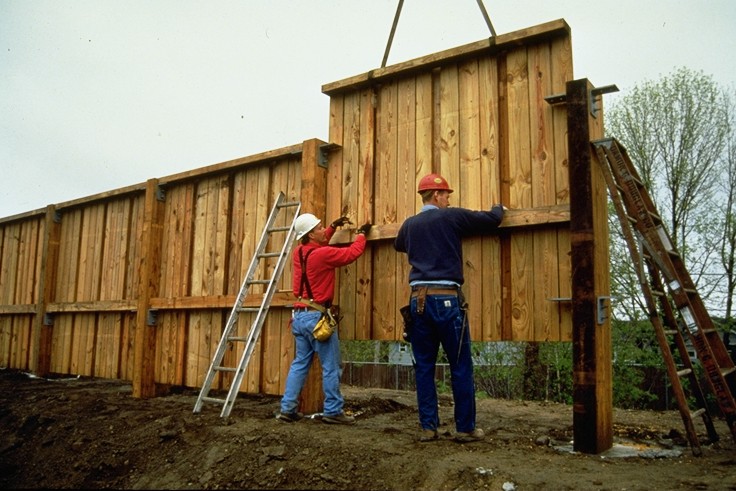Bridges and Highway Noise Barriers
Southern Pine Lumber for
Bridges and Highway Noise Barriers
Wood was probably the first material used to build a bridge and is still widely used for short and medium spans. Its strength, light weight, and energy-absorbing properties are key features that make it an excellent option for when building bridges and highway noise barriers.
Timber can also support short-term overloads without adverse effects. From an economic standpoint, wood is competitive with other materials on a first-cost basis and offers advantages when comparing lifecycle costs.
Contrary to popular belief, wood provides fire resistance qualities that meet or exceed those of other materials in severe fire exposures. Timber bridge construction can also occur in most weather conditions, as wood isn’t impacted by continuous freezing and thawing and resists harmful effects of deicing agents, which can lead to deterioration in other materials.
Timber bridges do not require special equipment for installation and can normally be constructed without highly skilled labor. They also present a natural and aesthetically pleasing appearance, particularly in natural surroundings.


Glued-Laminated Timber Bridges
Another misconception about wood as a bridge material is that its use is limited to small structures. That couldn’t be further from the truth with glulam, or glued laminated Southern Pine timbers, the most widely used modern timber bridge material.
Glulam is manufactured by bonding sawn lumber laminations together with waterproof structural adhesives. Thus, glulam is virtually unlimited in depth, width, and length and can be manufactured in a range of shapes.
It also provides higher design strengths than sawn lumber and means large wood structural elements can be created from easy to source smaller lumber sizes. Technological laminating advances over the years have further increased the suitability and performance of wood for modern highway bridge applications.
The USDA Forest Service has published two sets of standardized timber bridge plans:
Highway Noise Barriers
Noise wall barriers are typically designed to reduce diffracted and transmitted highway noise by at least 10 decibels in neighborhoods adjacent to high-traffic roads.
Pressure-treated Southern Pine is an excellent choice to build noise abatement systems, for the following reasons:
- Public meetings on highway noise problems have shown many homeowners prefer Southern Pine noise barriers because of their natural appearance and compatibility with the surrounding area.
- The flexibility of wood systems allows contractors to adjust walls and poles an inch or two in difficult terrains to ensure a snug fit in contrast with the precision engineering required for other materials.
- Because Southern Pine is a natural resource, noise barriers built with it are less subject to road salt damage.
- Southern Pine noise barriers can be repaired faster and more economically than metal or concrete if damaged by vehicle impact.
Most Southern Pine noise wall barriers range from 14 to 28 feet high and are constructed from horizontal 2×8 tongue and groove Southern Pine planks, in sections ranging from 10- to 14-feet wide. Others are built of glulam, often assembled into vertical sections. The cost of wood walls ranges from 40% to 50% less than competitive materials. The treated solid-sawn Southern Pine lumber is kiln-dried after treatment.
